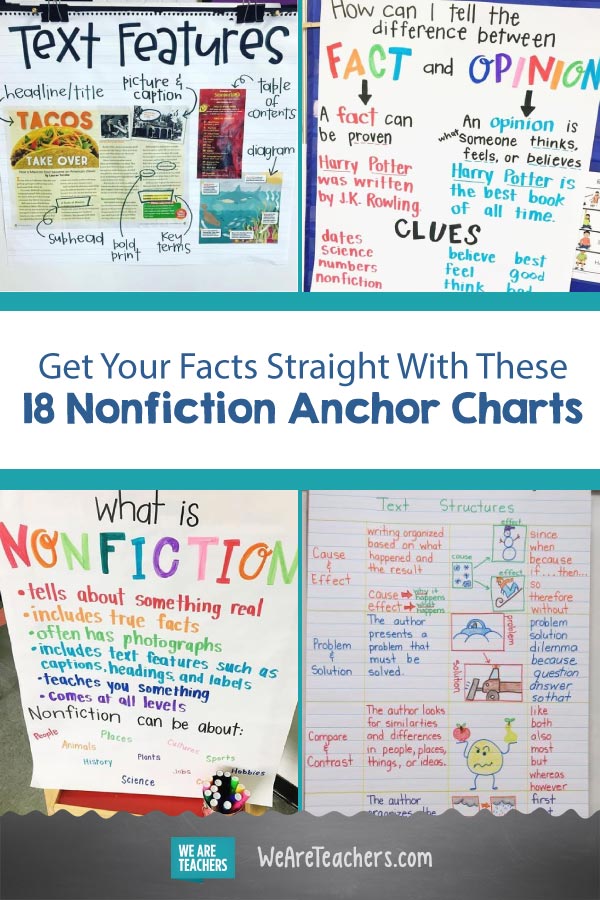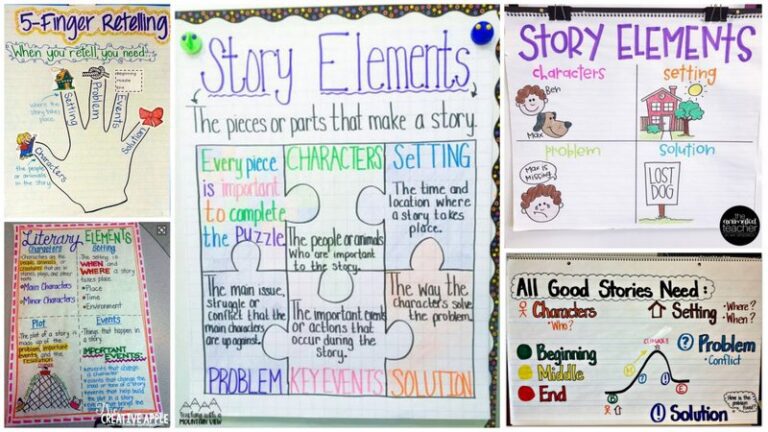When it comes to teaching nonfiction reading and writing, anchor charts are a valuable tool to solidify the what, when, why and how in learners’ minds. Not the artistic type? No worries—we’ve collected some of our favorite nonfiction anchor charts for you to recreate in your classroom.
What exactly is nonfiction?
Nonfiction is informational text that uses facts to teach learners about something.
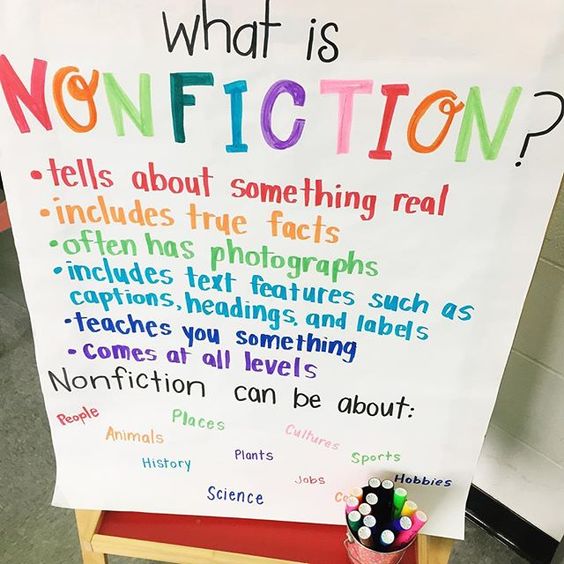
SOURCE: The Designer Teacher
[contextly_auto_sidebar]
What are some examples of nonfiction?
Nonfiction texts can be found in a variety of forms. Brainstorm with your students about where they may find this type of writing.
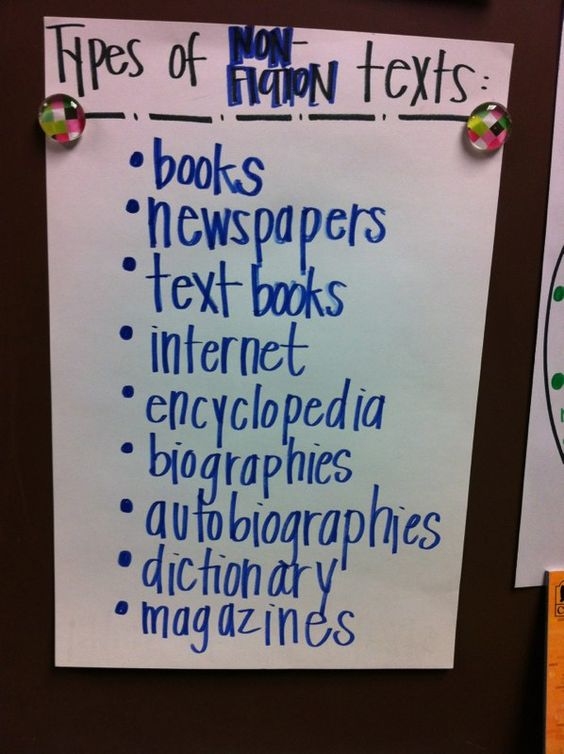
SOURCE: Julie Ballew
Drive your point home with pictures and samples of nonfiction sources.
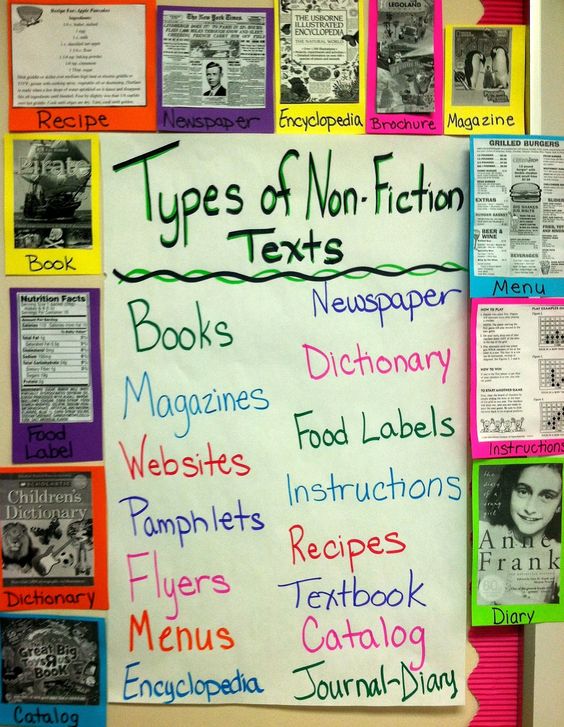
SOURCE: Hello Learning
What’s the difference between fiction and nonfiction?
Good question. Many young learners get hung up on the “non” portion of the word nonfiction, reasoning that nonfiction must mean not real. So spend lots of time sorting through examples of different types of writing to help your students memorize the difference.
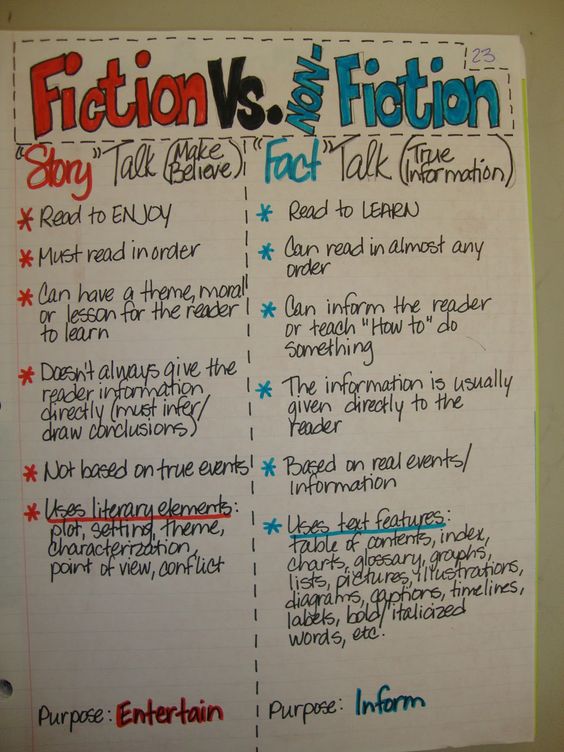
SOURCE: Mrs. Denson’s Adventures
This anchor chart explains the difference in pictograph form:
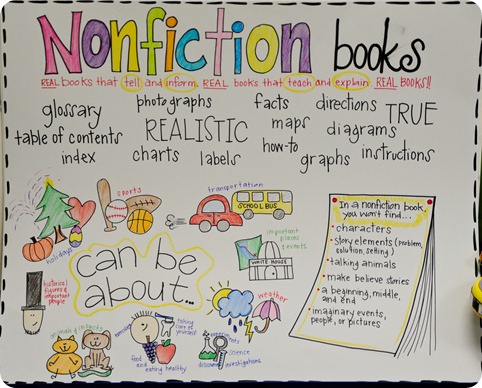
SOURCE: A Teacher and Technology
A Venn diagram is another great way to show the similarities and differences between nonfiction and fiction:

SOURCE: Elementary Shenanigans
How do we read nonfiction?
As opposed to reading stories for pleasure, the main purpose for reading nonfiction is to learn facts about something. Understanding this helps readers set a purpose for reading in a more focused, attentive way.
Here’s a simple version:
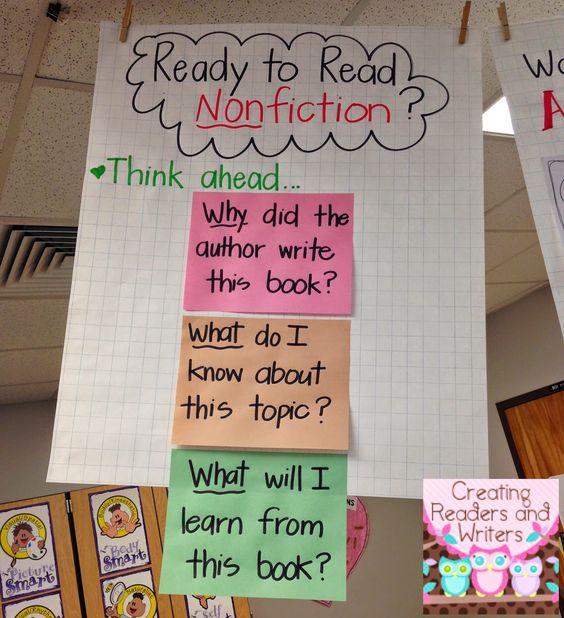
SOURCE: Creating Readers and Writers
And one that’s a little more detailed:

SOURCE: One Stop Teacher Stop
What are nonfiction text features?
Nonfiction texts are organized differently than fiction. Usually the writing is more clear, concise and to the point. The most distinctive characteristic of nonfiction is the use of graphic features that supplement the learning.
Use anchor charts to show examples of some of different text features readers may encounter. For example, photographs, charts, graphs, captions, etc.
This chart addresses why text features are an important part of nonfiction texts:
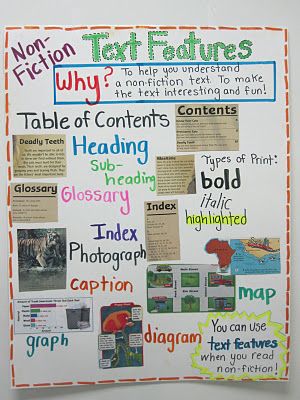
SOURCE: Second Grade Style
And this one, for upper elementary students, goes into greater detail about each feature.
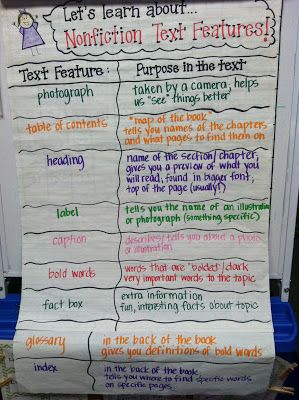
SOURCE: Learning Adventures with Mrs. Gerlach
Additionally, this chart uses real life examples to point out different text features:
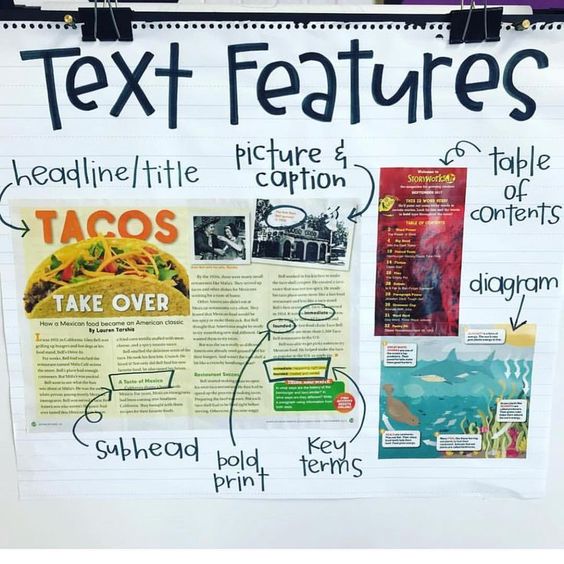
SOURCE: Amy Groesbeck
What are some of the ways nonfiction writing is organized?
Nonfiction writing can follow a number of predictable formats, called text structures. Understanding the way a piece of nonfiction is organized ahead of time will help students better understanding what they’re reading.
Here is an example from an upper elementary teacher:
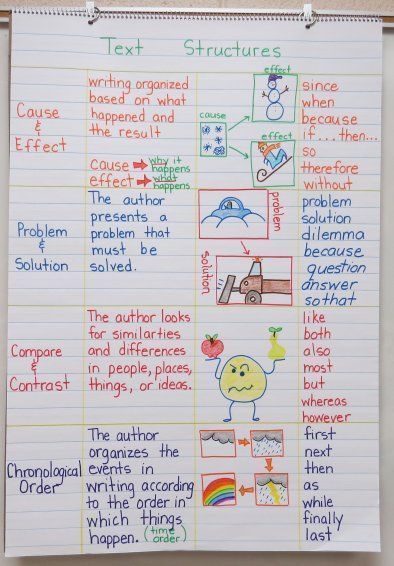
SOURCE: Book Units Teacher
And here is one from a primary teacher:
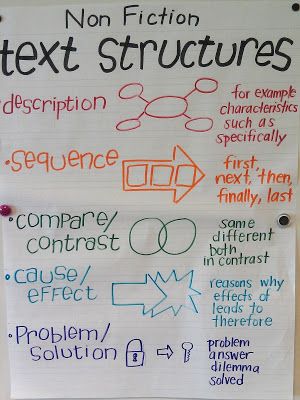
SOURCE: Mrs. Braun’s Second Grade Class
What are some ways to respond to nonfiction?
Once students have read a nonfiction passage, it is important for them to show what they have learned. This anchor chart lays out four different ways for students to take notes and organize their thinking around a nonfiction text.
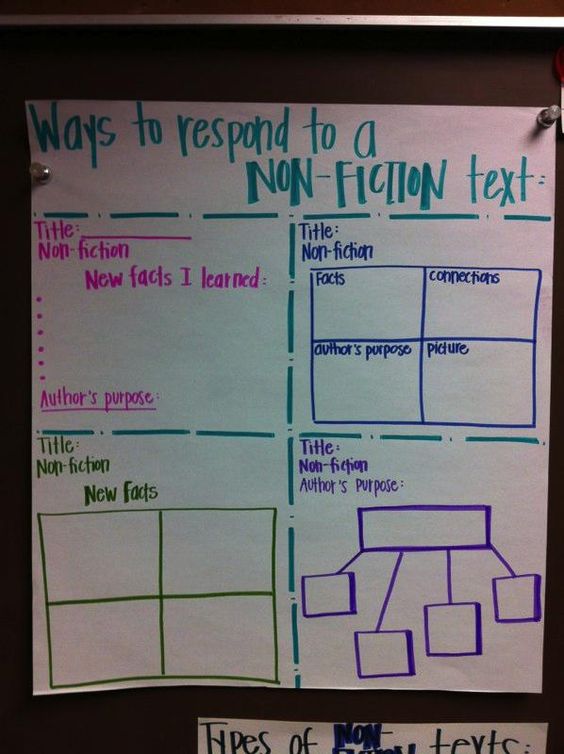
SOURCE: JBallew
What is the difference between fact and opinion?
Nonfiction writing is based on facts. But sometimes opinions can masquerade as truths. Teaching students to recognize the difference between facts and opinions will help them distinguish between fiction and nonfiction writing.
This anchor chart shows students vocabulary words that will help them distinguish between fact and opinion:

SOURCE: The Designer Teacher
How do we summarize nonfiction?
Pulling out the most important information from expository texts is a critical literacy skill for students. This anchor chart encourages students to use the five finger questioning strategy:
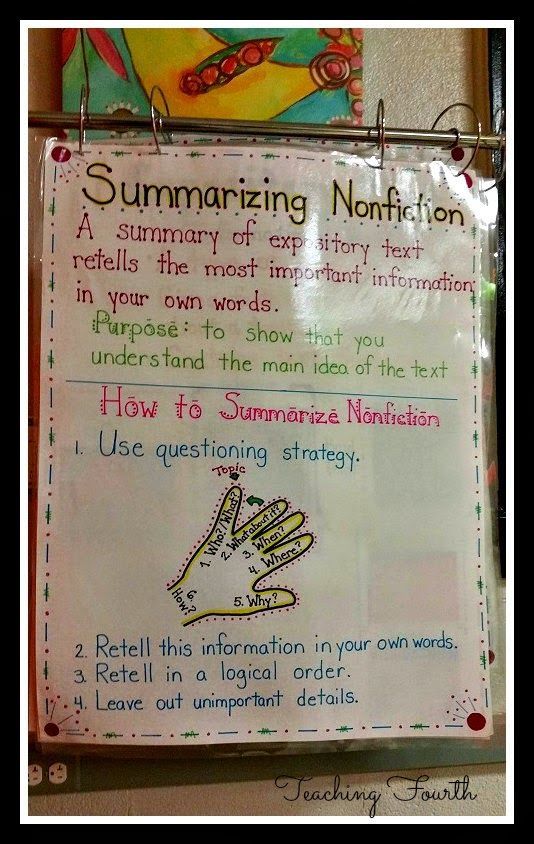
SOURCE: Upper Elementary Snapshots
Is nonfiction the same thing as expository text?
Yes. This anchor chart shows that expository text is another name for informational text written for the purpose of informing or explaining something to a reader:
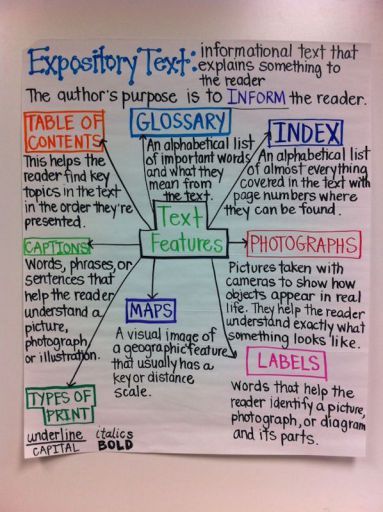
SOURCE: Miss Klohn’s Classroom
What is narrative nonfiction?
Narrative nonfiction is a different structure of nonfiction. Basically, it tells a story, includes facts and examples about a topic, and can include text features.
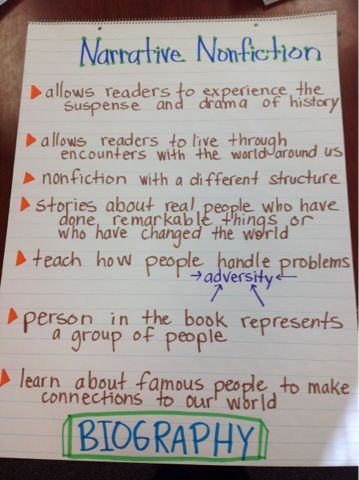
SOURCE: McElhinney’s Center Stage
What are your favorite nonfiction anchor charts? Share your ideas in our WeAreTeachers HELPLINE group on Facebook.
Also, check out 36 Awesome Anchor Charts for Teaching Writing.
